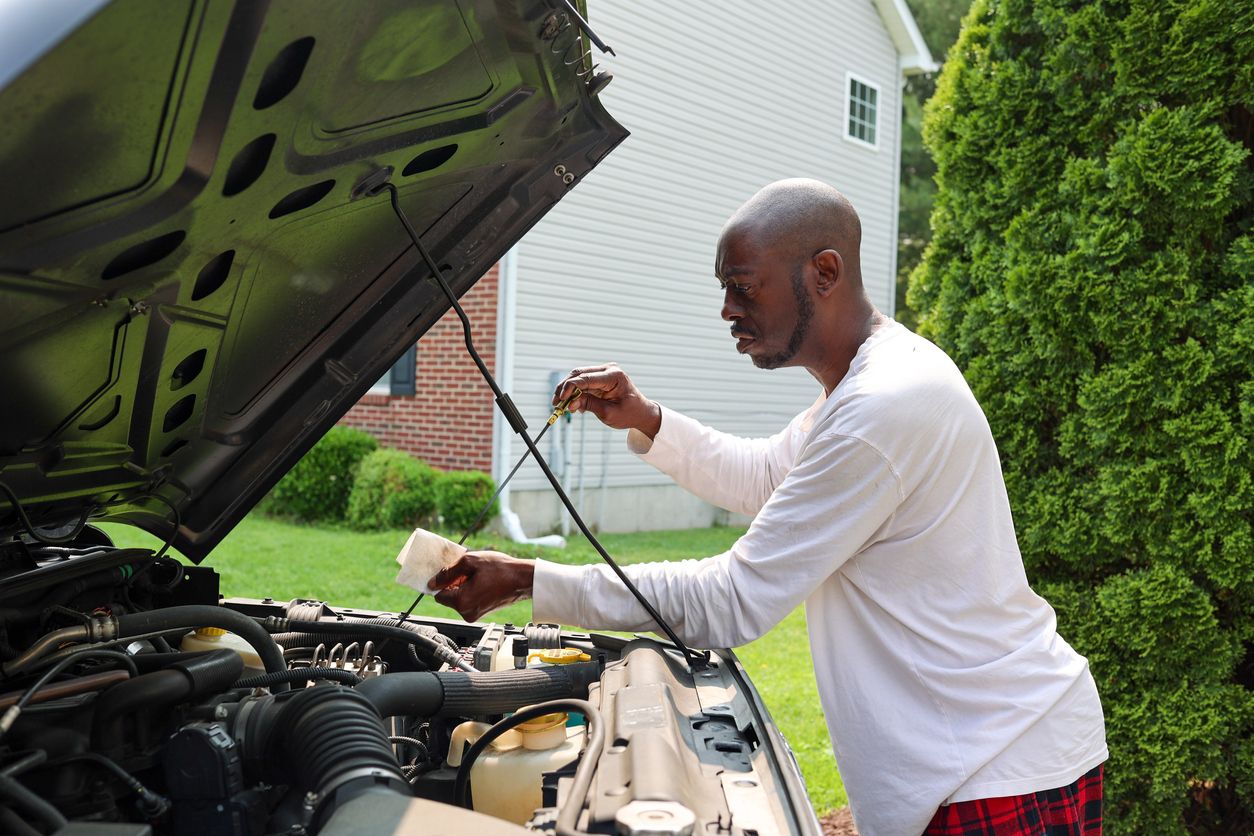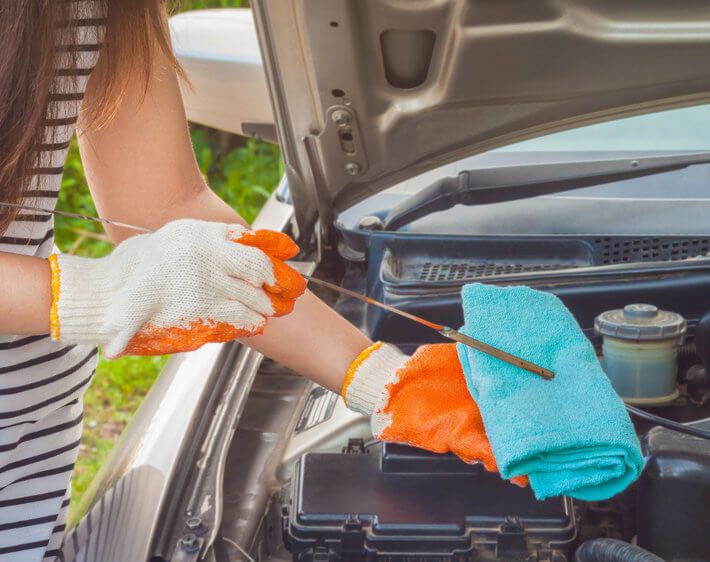Coolant and engine oil live in separate worlds for a reason. Oil keeps metal parts slick, protected, and moving, while coolant controls heat. When they start mixing, neither fluid can do its job properly — resulting in a direct threat to your engine’s (and your wallet’s) survival. So, if you think your engine oil mixed with coolant, don’t brush it off.
If you’ve been Googling “coolant in engine oil symptoms,” you’ve come to the right place. We want to help you understand what’s going on under the hood so you can make the right decision for your vehicle. We’ll walk you through how coolant can leak into your oil, what it looks like when it happens, and why it’s important to address the problem the right way.
How Does Coolant Get Into Oil?
A blown head gasket is the most common culprit for this issue, letting coolant seep into oil passages or even a cylinder. Engine oil and coolant should never mix, so it typically takes a serious failure for coolant to sneak into your oiling system.
A warped or cracked cylinder head can also cause this issue. Though rarer, overheating or freezing can result in a cracked engine block that splits just enough to connect the wrong fluid channel but still maintain combustion. And on some engines, a leaking oil cooler can quietly let the two fluids trade places.
What Does Coolant in Oil Look Like?
As one might expect, oil and coolant don’t blend nicely. If you pull your engine oil dipstick and see something more akin to a milkshake than normal engine oil, know that this milkshake won’t bring boys to the yard — only professional mechanics. Here are some of the most noticeable signs of coolant in engine oil:
- Milky or frothy oil on the engine oil dipstick
- Oil that has risen past the “full” mark on the dipstick (coolant can add to the oil volume)
- White sludge under the oil cap
- Overheating or temperature spikes with no visible coolant leaks
- White smoke or sweet-smelling exhaust coming out of the tailpipe (that’s coolant burning)
- Rough idle or misfires, from contaminated combustion
If you notice oil in your coolant system or any of the issues above, it’s not a “wait and see” problem — it’s a “park and get it checked” problem. Contact Firestone Complete Auto Care for fast engine diagnostic and repair services.
Why Coolant Mixing With Engine Oil Is Dangerous
It may be tempting to think, “Well, how bad could it be? I can probably keep driving, right?” In an engine, the answer is… catastrophic. Once coolant contaminates your engine oil, several things can happen:
- Oil may not lubricate as well, causing metal to grind on metal.
- Tiny oil passages can clog with an acidic mixture of oil and coolant.
- Coolant, which contains water, can eat away at the metal in your engine block, loosen tolerances, and worsen damage.
- Due to reduced lubrication, friction and the potential for damage increase. Bearings can fail, cylinder walls may wear faster, and other complications can wreak havoc on your engine.
How to Fix Coolant Mixing With Engine Oil
Unfortunately, a simple oil change won’t fix your issues. The fluids might look better for a few miles, but without addressing the failure point, contamination will recur sooner rather than later. When you have coolant in your oil, the only real solution is to seek vehicle-specific service, where professionals can diagnose your issue and direct you to someone who can:
- Run pressure checks and/or chemical tests to confirm the leak
- Inspect the head, block, and gaskets for warping, cracks, or other breaches
- Replace or repair damaged components, from oil coolers to cylinder heads
- Flush oil and cooling systems thoroughly
- Test any repairs under load to ensure they can keep you on the road
In the meantime, here’s what you should and shouldn’t do:
- Don’t open the radiator cap if your engine overheats. Wait for it to cool down first to avoid burns.
- Don’t keep driving. Tow your vehicle to our nearest service center. Every mile can risk the health of your bearings and camshaft.
- Document what you see, hear, and feel. This can help technicians diagnose your issue.
- Schedule an appointment with Firestone Complete Auto Care. Acting now can help prevent coolant contamination from turning into a full engine replacement.
Think Coolant and Oil are Mixing in Your Engine? Firestone Complete Auto Care is Here to Help
Have you noticed milky oil or white sludge under your cap? That could be coolant mixing with oil — a red flag you don’t want to ignore. Contact your local Firestone Complete Auto Care for a professional inspection. Our technicians can diagnose the issue and, if addressed in time, may help prevent serious engine damage. Book your appointment today!


